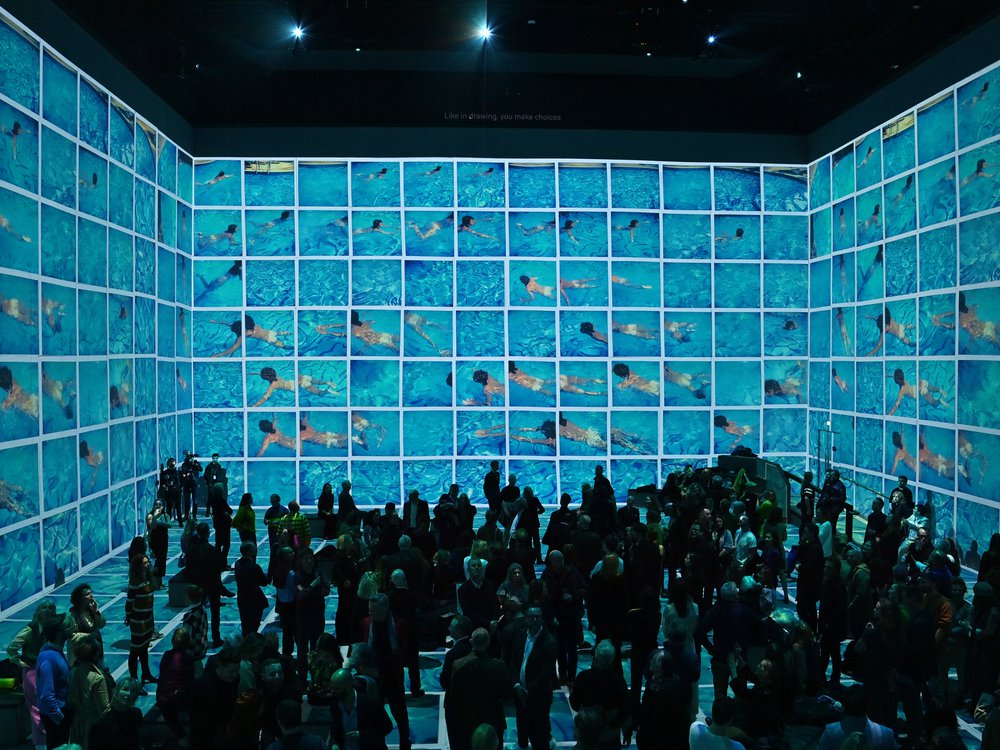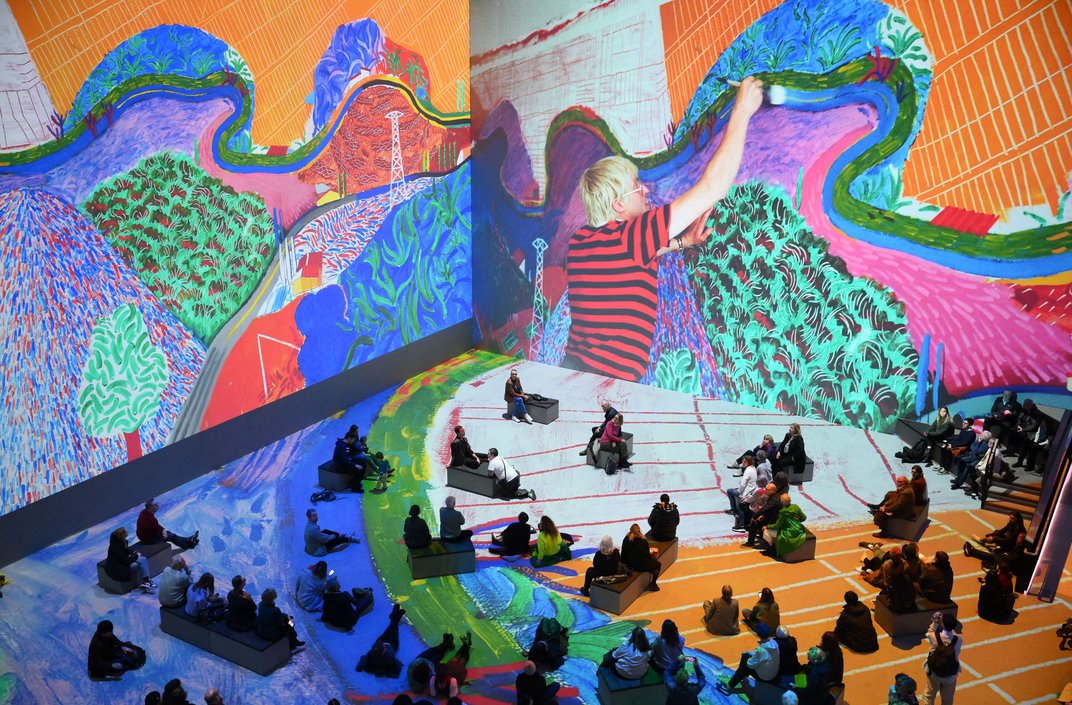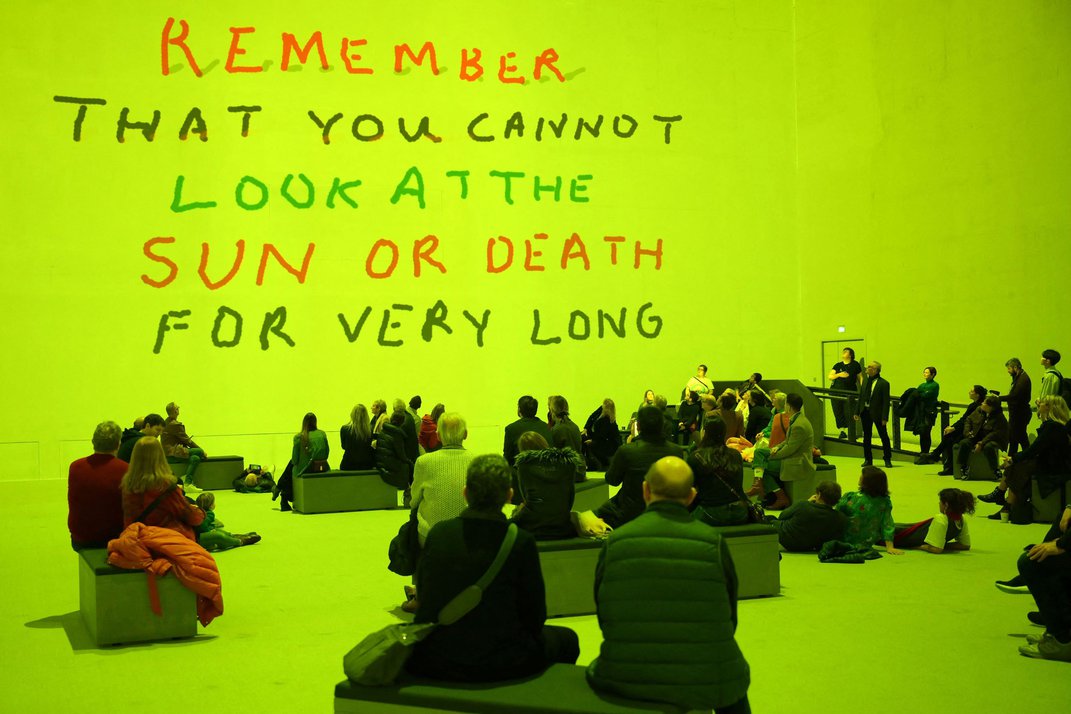David Hockney Is the Subject of His Own Immersive Experience
Using projections and voiceovers, “Bigger & Closer (Not Smaller & Further Away)” examines the renowned artist’s career

In recent years, everyone from Vincent van Gogh to Frida Kahlo has been the subject of an “immersive experience,” a type of installation that takes the great oeuvres of an artist, animates them, and projects them onto empty walls.
These displays have most often examined the work of deceased artists: In addition to Kahlo and van Gogh, immersive experiences have highlighted Salvador Dalí, Gustav Klimt, Claude Monet, Pablo Picasso and Leonardo da Vinci’s Mona Lisa.
The latest immersive experience at Lightroom, a new venue in London, has also taken up a celebrated artist as its subject. But this time, he’s very much alive—and he helped design the experience.
David Hockney’s “Bigger & Closer (Not Smaller & Further Away)” opened this week and runs through June 4. Much like other immersive experiences, the show projects the British artist’s drawings, paintings and collages across large, empty rooms. Over speakers, classical music by composer Nico Muhly and audio of the artist’s own musings and reflections about art filter through the room.
Hockney, 85, tells the New York Times’ Alex Marshall that, although he hasn’t seen any immersive shows featuring other artists, he believes his is different. “They’re dead,” Hockney says. “I’m a living artist, so I’ve come in and actually done things.”

A pivot into the immersive space is a natural progression for Hockney, an artist who has long exhibited a fascination with technology.
Born in the United Kingdom in 1937, Hockney moved to Los Angeles in 1964, where he was inspired to paint colorful, glamorous scenes using acrylics, a relatively new type of paint at the time.
In the ’80s, Hockney turned to technology. He used polaroid cameras to make disjointed portraits and landscapes that traveled across time and space. He experimented with fax machines and photocopiers. Decades later, when iPads rolled around, Hockney used them to make art.
Hockney tells the Times that “Bigger & Closer” was a natural progression for him. “My work was leading up to this, really,” he says.
Critics, however, don’t all see it that way. Though Hockney has long been celebrated by the art world, reviews of “Bigger & Closer” have been less favorable. “There’s too much that disappoints and irritates,” writes Ben Luke for the Evening Standard. “You don’t really get a feel for much of the best of his work.” The Guardian’s Jonathan Jones says Hockney has “lent his fame here to a dumb contemporary fad that doesn’t—and cannot—capture the beauty of his art.”
Hockney, however, tells the Times that he is unbothered by such remarks.
“I don’t care what critics say about me,” Hockney says. “I think it’s really good … and if I think it is, that’s all that counts.”
“Bigger & Closer (Not Smaller & Further Away)” is on view at Lightroom in London through June 4.